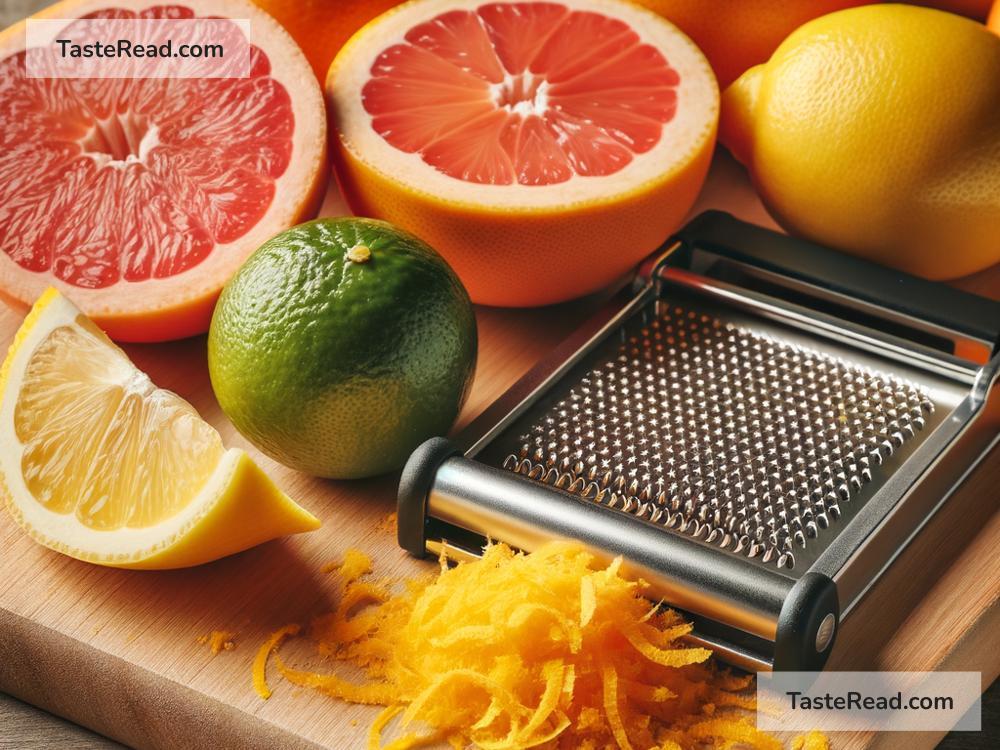How to Use a Microplane to Zest Citrus or Grate Cheese: A Handy Guide for Kitchen Newbies
Navigating the kitchen and its myriad tools can feel like going on an adventure. It’s exciting but can sometimes leave you scratching your head, especially when you come across a tool that looks more like it belongs in a woodworking shop than among your pots and pans. Enter the microplane – a long, narrow grater that looks a bit like it could double as a file for smoothing edges. But don’t be fooled by its humble appearance; this tool is a kitchen wizard, especially when it comes to zesting citrus fruits or grating cheese. Let’s dive into how you can wield this magic wand and elevate your cooking game.
What Is a Microplane?
Born in the woodworking shop but made its mark in the culinary world, a microplane is a type of grater known for its fine, razor-sharp teeth. It’s designed to create delicate shavings of hard materials, making it perfect for getting the zest out of citrus fruits without the bitter pith or turning a chunk of Parmesan cheese into airy, fluffy strands that melt in your mouth.
The Art of Zesting Citrus
Zesting citrus fruits like lemons, limes, oranges, or grapefruits can add a punch of flavor to dishes, whether you’re baking a cake or whipping up a marinade. Here’s how to do it:
-
Wash and Dry: Always start by thoroughly washing the fruit to remove any wax or dirt. Dry it well so it won’t slip out of your hand while zesting.
-
Grip It Right: Hold the microplane in one hand and the citrus fruit in the other. You’ll be moving the fruit against the microplane, not the other way around.
-
The Zesting Movement: Lightly press the fruit against the blades and move it in a downward motion along the length of the microplane. Rotate the fruit after each pass to avoid grating into the bitter white pith just beneath the colored skin.
-
Tap It Out: After zesting, give the microplane a gentle tap against your cutting board or bowl to release any clinging zest.
Mastering Cheese Grating
Whether it’s to top off your pasta with some Parmigiano-Reggiano or add a dusting of cheddar to your soup, grating cheese is a common kitchen task. Here’s the best way to use a microplane for cheese:
-
The Right Cheese: Microplanes are ideal for hard cheeses. Softer cheeses can be tricky as they might smear and clog the blades.
-
Cold Cheese Works Best: If you’re dealing with a softer variety, popping it in the freezer for about 15 minutes before grating can make the task much easier.
-
Secure Your Station: Just like with citrus, hold the microplane firmly in one hand over a bowl or your cooking vessel. With your other hand, hold the cheese.
-
Grate Away: Using gentle pressure, push the cheese downwards against the blades, moving it back and forth. Keep your fingers clear of the sharp edges!
-
Clean As You Go: Cheese, especially softer varieties, can get stuck in the microplane. Periodically check and clear the blades to keep things moving smoothly.
Cleaning and Maintenance Tips
To keep your microplane sharp and effective, here are a few maintenance tips:
-
Clean Immediately: Cheese and zest can dry and harden, making them difficult to remove. Wash your microplane right after use under running water. A brush can help dislodge any particles stuck in the blades.
-
Dishwasher Debate: While many microplanes are dishwasher safe, washing by hand can prolong their sharpness. If you do use the dishwasher, place it in the utensil compartment with the handle down to prevent water from pooling in the handle.
-
Storage: Store your microplane with a protective cover or in a drawer where it won’t rub against other tools, dulling its edges.
With this simple guide, your microplane is ready to become one of the most versatile tools in your kitchen arsenal. Whether fluffing up some zest to add a zing to your dishes or grating cheese to perfection, mastering the microplane will add a new layer of flavor and texture to your culinary creations. Happy cooking!


